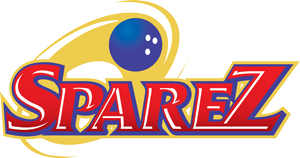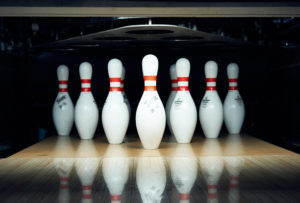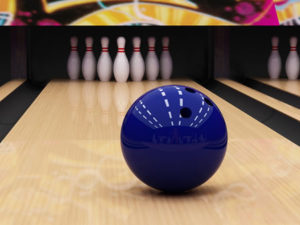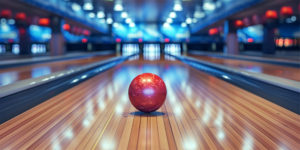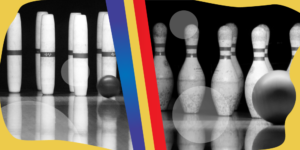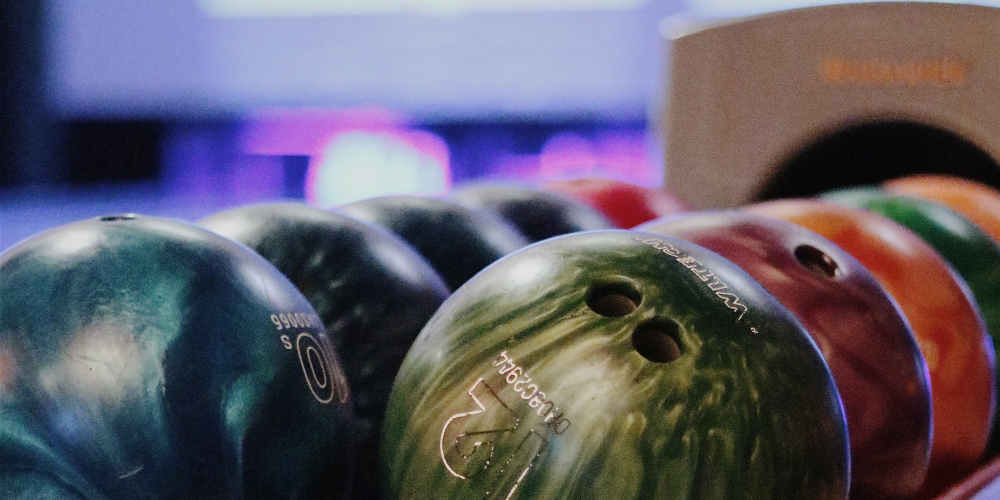
Your Guide to Choosing the Right Bowling Ball
Whether you are bowling competitively or just bowling for fun with friends, you always want to do well in your game. There are many elements to bowling a good game, including form and bowling technique, but something that can largely affect your gameplay is the actual bowling ball you choose. Follow this guide to ensure you’re choosing the best ball for you!
Choosing the Correct Ball Weight
Bowling balls come in a range of weight options (anywhere from about 6-16 lbs), and each weight is ideal for different people. Some prefer the ease of lifting a lighter ball, while many prefer heavier balls and their effects on the pins. The very light balls are often for children or small adults.
As a general rule, the best bowling ball weight for you should be about 10% of your body weight, up to 160 lbs. This, of course, can vary from person-to-person, and could change due to any injuries or handicaps a person may have, or due to your personal bowling technique. Most professional bowlers use 16 lb balls or close to it. However, if you are not an avid bowler and find this weight to be uncomfortable, a lighter weight can be the perfect fit.
Thumb Fit
The finger holes on a bowling ball can greatly affect your gameplay and comfort with the ball. Make sure that your thumb neither slides out too easily from the hole, nor gets stuck in the hole. A good fit will ensure the proper release when you go to bowl.
Which Coverstock Is Right for Me?
Coverstock is the exterior material of your bowling ball. The most popular types of coverstock that are available for bowling balls are plastic/polyester, urethane, reactive resin, proactive/particle, pearl reactive, solid reactive, and hybrid reactive. Each coverstock will affect how the ball reacts to hitting the bowling lane, as each material creates a different type of friction against the lane surfacing. Different bowlers, different lanes and different bowling techniques will call for different coverstock. Here is an in-depth look as to how each material can affect your gameplay:
1. Plastic/Polyester
A ball with a plastic or polyester coverstock will have a very smooth feeling to it. However, this smoothness will lead to less resistance when travelling down the bowling lane. This means that a ball with this coating will have less hook potential, which is when the ball travels in a spinning curve to the pins vs. a straight shot. Balls with this coating are highly recommended to beginners with a great desire for a bowling ball’s firm grip. More experienced bowlers normally utilize this ball for spares, as they can easily forecast its reaction due to its lower hook potential.
2. Urethane
Urethane coverstock is more long-lasting than a plastic coating, and also provides more friction against the lane surface, giving it more hook potential. Its increased friction allows for less deflection, therefore contributing to improved pin action (when pins are hit and move into each other, aiding in knocking down additional pins).
3. Reactive Resin
Bowling balls with this coverstock have more friction, hook potential, and pin action than urethane or plastic coated balls. However, this coating is not the most durable, and can be more difficult to use due to its high sensitivity to lane conditions and user errors. It is recommended that intermediate and advanced bowlers use balls with this coverstock.
4. Proactive/Particle
A similar coverstock to reactive resin, proactive/particle coverstock differs due to adding texturizing particles that create a tread-like surface that creates more traction through heavier amounts of oil, increasing friction and hooking action. Proactive coverstocks also respond less violently to dry lane surfaces than reactive coverstocks, creating a smoother, more arcing ball reaction with more control.
Both proactive and reactive coverstocks can be sanded or shined to create large differences in hook potential.
5. Pearl Reactive
These bowling balls are reactive balls with an additional mica material added, giving the coverstock a glittery appearance. On dry lanes, the ball reaction is increased in length due to the mica material making microscopic pores more rough.
The amount of friction in pearl reactive balls is less than solid reactive balls, which generally results in less loss of stored energy as the ball travels down the lane, and a sharper reaction from the break point to the pocket compared to solid reactive balls. In short, the pearl reactive balls have the ability to react quickly to high friction portions of the bowling lane.
6. Solid Reactive
This is another reactive type of ball, but with a matte finish. Solid reactive coverstocks have the greatest amount of microscopic reactive pores on the ball surface compared to other reactive coverstocks, making them best for a heavily oiled lane. The solid coverstock comes in a polished finish, sanded finishes, and with a rubbing compound buffed finish so the degree of surface friction can be controlled.
Due to the increased surface friction, solid reactive balls tend to hook sooner than pearl reactive balls and also experience a reduction of energy as they travel down the lane compared to pearl reactive coverstock. As a solid reactive ball leaves the oil pattern on the back third of the lane surface, it tends to hook less sharply at the break point to the pocket than a pearl reactive ball.
7. Hybrid Reactive
This reactive coverstock is a combination of pearl and solid, allowing the ball to do well in any lane condition. Hybrid coverstocks offer the mid-lane reaction of a solid coverstock and the back end reaction of a pearl coverstock. This coverstock will give you the front end glide you seek on medium-oil conditions, and respond at the break point to the pocket similarly to pearl reactive ball coverstocks.
Core Types – Symmetrical vs. Asymmetrical
Symmetrical
With a symmetrical drilled ball, you will produce a smooth, controllable motion when compared to an asymmetrical ball.
Asymmetrical
An asymmetrical ball can create more area at the break point and will respond to friction faster at the break point than symmetrical balls. Among other things, this can produce more hook.
Try Our Different Balls & Learn From the Best at Davie Sparez!
Want to test out your new bowling ball knowledge on the lane? Come on down! Call us today at 954-434-9663 or fill out our online form with any questions or concerns. Here at Davie Sparez we are dedicated to great times and quality lane service.
